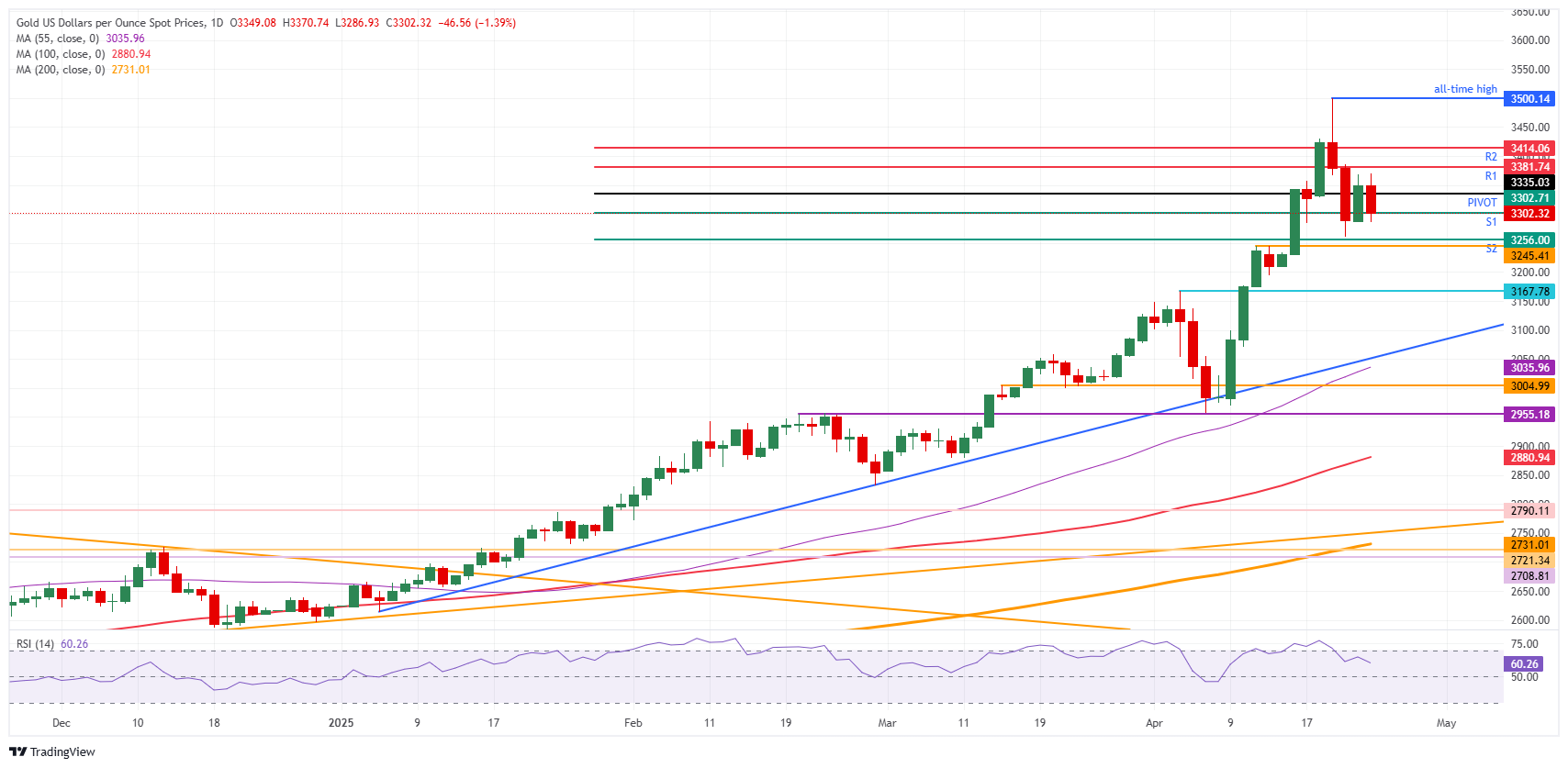- Gold’s value is receding this Friday, on track to conclude the week with a loss.
- China denies current trade discussions with the US, contradicting assertions made by President Trump.
- Market participants seem to be acting on deal expectations, boosting stock values and lessening their investment in Gold.
The price of Gold (XAU/USD) is declining this Friday, nearly reversing all gains from Thursday, and is positioned to end the week negatively. This decline occurs amidst growing uncertainty regarding the trade relationship between the US and China, with President Trump suggesting ongoing talks, a claim refuted by China.
Earlier on Friday, Bloomberg reported that China is considering waiving tariffs on certain US goods due to rising costs, causing market fluctuations. Simultaneously, Bloomberg also indicated that China is formulating contingency plans, including new financial and policy tools, to manage external economic shocks.
Daily Market Summary: Swiss National Bank Profits from Gold Surge
- Following reports that the Swiss National Bank (SNB) realized a profit of 6.7 billion CHF from its Gold holdings in Q1 2025, the Central Bank of Kenya is considering adding Gold to its reserves to broaden its foreign-exchange holdings beyond the dollar and other currencies, according to Bloomberg.
- Gold’s unprecedented rally and significant intraday fluctuations have stirred retail demand in China, leading to record trading volumes on the Shanghai exchange and prompting warnings from authorities, Reuters reports.
- US Treasury Secretary Scott Bessent suggested that the US and South Korea could reach a trade “understanding” as early as next week, Bloomberg reports. Increasing reports of potential trade agreements are expected to exert downward pressure on Gold prices.
Gold Price Technical Perspective: Challenges in Interpretation
The previously rapid increase in Gold prices appears to require further stabilization. Investors seem to be reacting to rumors of a potential trade agreement between the US and China, despite China’s denials. The risk lies in the market potentially misinterpreting the US stance on whether they are “talking” versus “negotiating,” and a deal may not materialize soon, potentially leading to a retest of $3,500.
From a technical analysis standpoint, the daily Pivot Point at $3,335 is the initial level that needs to be regained for upward momentum. The R1 intraday resistance faced a brief test during the early opening this Friday, around $3,381. Further upward movement could see Gold prices extending to the R2 resistance at $3,414, surpassing the $3,400 mark.
On the downside, the S1 support at $3,302 was briefly breached this morning, although price action is now reversing back above it. Further down, the S2 support is at $3,256, preceding the key technical floor near $3,245 (April 11 high).

XAU/USD: Daily Chart
Gold FAQs
Throughout history, Gold has been essential, serving as a valuable asset and exchange medium. Besides its aesthetic appeal and use in jewelry, it’s now considered a safe-haven investment, particularly during volatile periods. Gold is also regarded as a safeguard against inflation and currency depreciation, as its value isn’t tied to a specific issuer or government.
Central banks are the primary holders of Gold. To bolster their currencies during instability, they often diversify their reserves by purchasing Gold, enhancing the perceived strength of their economy and currency. Substantial Gold reserves can inspire confidence in a country’s financial stability. According to the World Gold Council, central banks added 1,136 tonnes of Gold, valued at approximately $70 billion, to their reserves in 2022, marking the largest annual purchase on record. Emerging economies like China, India, and Turkey are rapidly increasing their Gold reserves.
Gold exhibits an inverse correlation with the US Dollar and US Treasuries, both significant reserve and safe-haven assets. When the Dollar’s value decreases, Gold tends to increase, enabling investors and central banks to diversify their assets during turbulent times. Gold also has an inverse relationship with risk assets. A stock market rally typically weakens Gold prices, while sell-offs in riskier markets tend to favor the precious metal.
The price of Gold is influenced by various factors. Geopolitical instability or fears of a significant recession can rapidly increase Gold prices due to its safe-haven status. As a non-yielding asset, Gold tends to increase with lower interest rates, while higher interest rates usually depress its value. However, most price movements depend on the US Dollar’s (USD) performance, as Gold is priced in dollars (XAU/USD). A strong Dollar tends to restrain Gold prices, while a weaker Dollar is likely to increase them.






